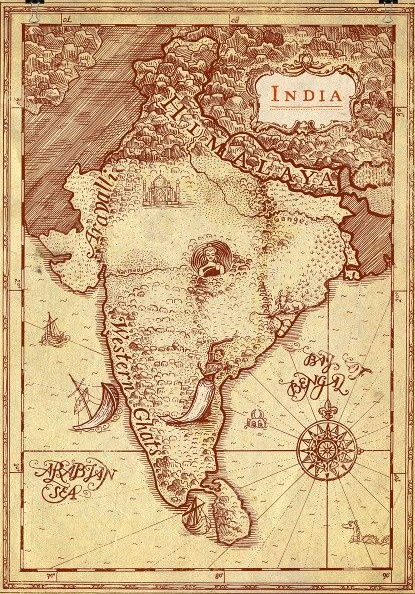by Gowri Dixit
Indo-Pacific as a geopolitical construct was first proposed by German geopolitician Karl Haushofer in the 1920s. Haushofer established the “Indo-Pacific” as a social and political region while also providing new evidence in the fields of marine sciences, ethnology, and philology. He developed an “Indo-Pacific” vision for changing the global order and envisioned the political renaissance of South, East, and Southeast Asia against colonial dominance.
In the contemporary times the Indo-Pacific outlook re-emerged with the then-Japanese Prime Minister Shinzo Abe’s address in the Indian Parliament on the confluence of two oceans and the security of the region therewith in 2007. Alongside highlighting the importance of the region, Quadrilateral Security Dialogue (QSD), more popularly known as the Quad, was constituted with Japan, Australia, India, and the United States of America. Indo-Pacific as a geopolitical construct gained more prominence in the 2010s with countries like Australia and the United States of America designing their Indo-Pacific strategy and issuing white papers.
India’s Indo-Pacific: Definition and Vision
India’s definition of the Indo-Pacific includes the area from the eastern coast of Africa to the western coast of America. Our Indo-Pacific vision is based on India’s Act East Policy and the Security and Growth for All in the Region (SAGAR) doctrine. India advocates an Indo-Pacific region that is free, open, inclusive, peaceful, and prosperous, rooted in a rules-based international system. India promotes an order with investments in sustainable and transparent infrastructure, freedom of navigation and overflight, unhindered legal trade, respect for one another’s sovereignties, peaceful resolution of disputes, and equality for all nations.
Importance of Indo-Pacific
Indo-Pacific region has a growing influence on world politics, trade, and development, with more than 64% of the world’s population living in this increasingly seamless area, which also accounts for more than 60% of the global GDP. The maritime trade channels in this area facilitate around half of the world’s trade. The region is also the world’s most biodiverse area boosting fishery and tourism.
Maritime Security and Challenges
The term maritime security covers broad concepts like inter-state disputes, maritime terrorism, piracy, trafficking of narcotics, people and illicit goods, arms proliferation, illegal fishing, environmental crimes, or maritime accidents and disasters.
The Indo-Pacific region, given its rich resources, has seen contentions over territorial ownership. With over 40 disputes on the sovereignty and rights on seas in the South China Sea, robbery in seas, and the spread of terrorism in Southeast Asia are increasing maritime security challenges. Alongside these conflicts of territorial integrity, there is a significant threat of climate change on the coastal communities and their livelihoods.
Growing Chinese presence in the region is perceived as a threat to the security of the countries party to the region. From engaging with countries through its Belt and Road Initiative (BRI) to increasing its military and naval capacity in the Indian Ocean Region (IOR), China’s advancements are a challenge.
India’s Role in the Maritime Security of the Indo-Pacific
India has been consistently engaging with actors of the region to promote through its various initiatives to ensure an inclusive and secure region.
Indian Ocean Rim Association (IORA)
IORA was formed as a regional forum in 1997 to promote economic cooperation in the region, in which India is a founding member. With growing security challenges, during India’s tenure as chair of the association, maritime safety and security were identified as key concerns of the forum.
The SAGAR Doctrine
India’s SAGAR doctrine is based on Security, Capacity Building, Collective Action, Sustainable Development, and Maritime Engagement among the countries of the Indo-Pacific region. The doctrine was launched in 2015 with the vision of “advancing cooperation in the region and to use our capabilities for the benefit of all in our common maritime home.”
Indo-Pacific Regional Dialogue (IPRD)
The Indo-Pacific Regional Dialogue (IPRD) is an initiative by the Indian Navy on maritime strategy that started in 2018. Australia, Bangladesh, Canada, China, Indonesia, Israel, Japan, Seychelles, Singapore, South Korea, Sri Lanka, the United Kingdom, and the United States of America are the Indo-Pacific countries that participated in the second edition of the dialogue. Maritime connectivity, free and open Indo-Pacific, Blue Economy, and solutions to maritime security challenges were actively discussed by the countries party to the dialogue.
Malabar Exercise
‘Malabar’ is a joint military exercise held between the forces of India, the United States of America, and Japan. The exercise first started as bilateral cooperation between India and the United States of America and then opened to Japan. Recently, to address one of the major challenges of the region, the growing Chinese presence in the IOR, India invited Australia to join the exercise. Thus, the recent exercise saw QUAD countries display military cooperation.
Alongside these major efforts, India is involved in several humanitarian aid activities in the region, like that of Mission Sagar, an initiative to deliver Covid-19 assistance to the countries in the Indian Ocean Region. The assistance included supplies of essential food items, medicines, Ayurvedic medicines, and the deployment of Medical Assistance Teams.
Making the Presence Felt
In the growing prominence of the Indo-Pacific construct, India has significantly made its move, strategically and otherwise. While staying true to her peace, security, growth, and development principles, India has highlighted the need for a democratic, rule-based, cooperation-oriented Indo-Pacific. For further regional developments, India must concentrate on engaging with regional and stakeholder countries in more focused and outcome-oriented ways.
Gowri Dixit is a Student of Public Policy, School of Social Sciences, Ramaiah University of Applied Sciences and is a Security Studies Enthusiast.
References
Bueger, C. (2015). What is maritime security? Marine Policy, 53, 159–164. https://doi.org/10.1016/j.marpol.2014.12.005
Jaishankar S. (2022). Address by External Affairs Minister, Dr. S. Jaishankar at the Chulalongkorn University on ‘”India’s Vision of the Indo-Pacific”’. https://www.mea.gov.in/Speeches-Statements.htm?dtl/35641/Address_by_External_Affairs_Minister_Dr_S_Jaishankar_at_the_Chulalongkorn_University_on_Indias_Vision_of_the_IndoPacific#:~:text=We%20envisage%20a%20free%2C%20open,for%20sovereignty%2C%20peaceful%20resolution%20of
Li, H. (2022). The “Indo-Pacific”: Intellectual Origins and International Visions in Global Contexts. Modern Intellectual History, 19(3), 807–833. https://doi.org/10.1017/S1479244321000214
Ministry of External Affairs, Government of India. (2019, November 8). India’s concept of Indo-Pacific is inclusive and across oceans. https://mea.gov.in/articles-in-indian-media.htm?dtl/32015/Indias_concept_of_IndoPacific_is_inclusive_and_across_oceans
To, A. T. (2019, February). Maritime Security in the Indo-Pacific: Mixed Opportunities and Challenges from Connectivity Strategies. Konrad Adenauer Foundation; Panorama. https://www.kas.de/documents/288143/10822438/Panorama_2019_02_4c_v5d_ToAnhTuan.pdf/bb017d3b-c195-681c-c5a3-19054947fec5?t=1606102327617
Cover image: Pinterest
**images are for reference purposes only








